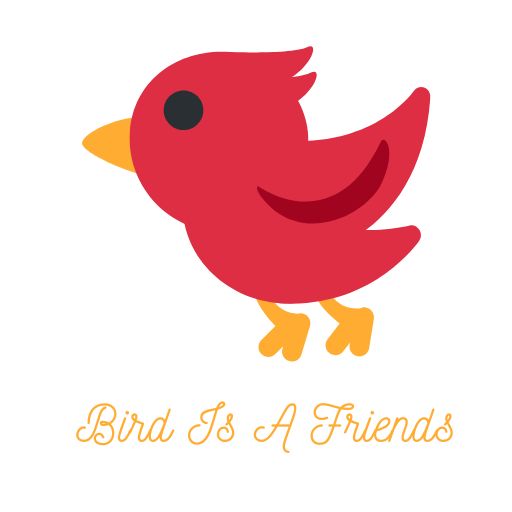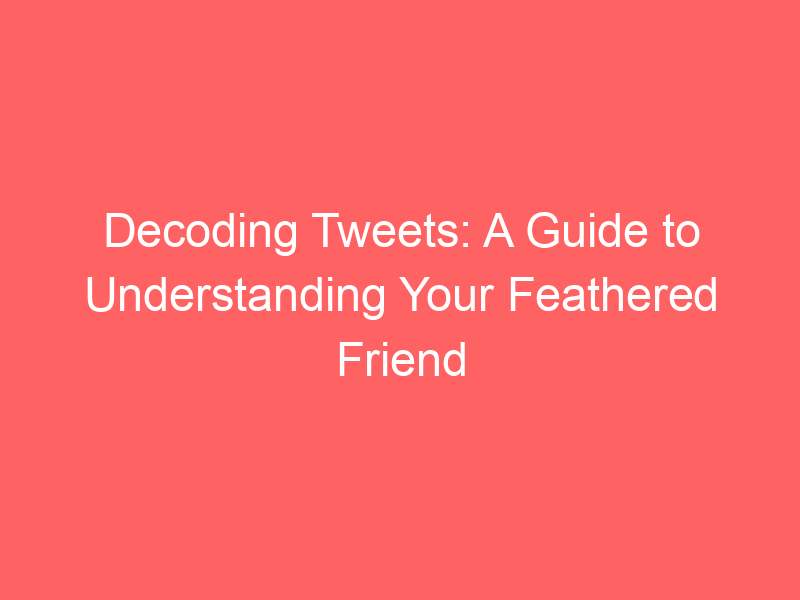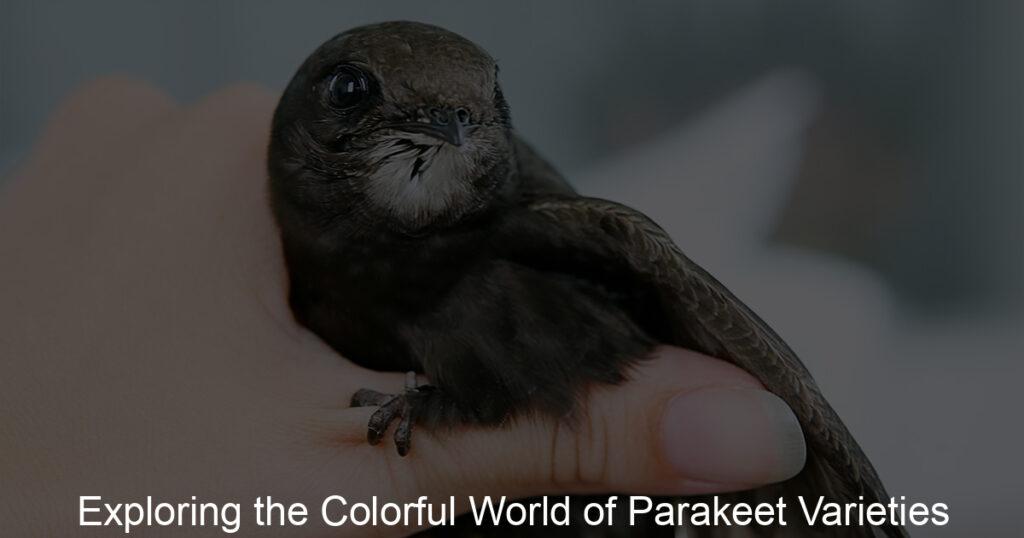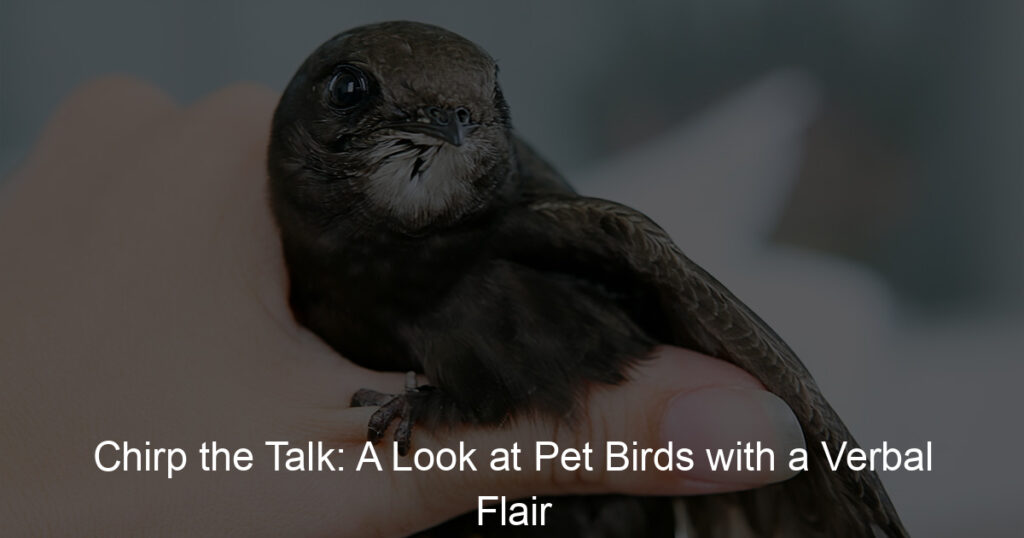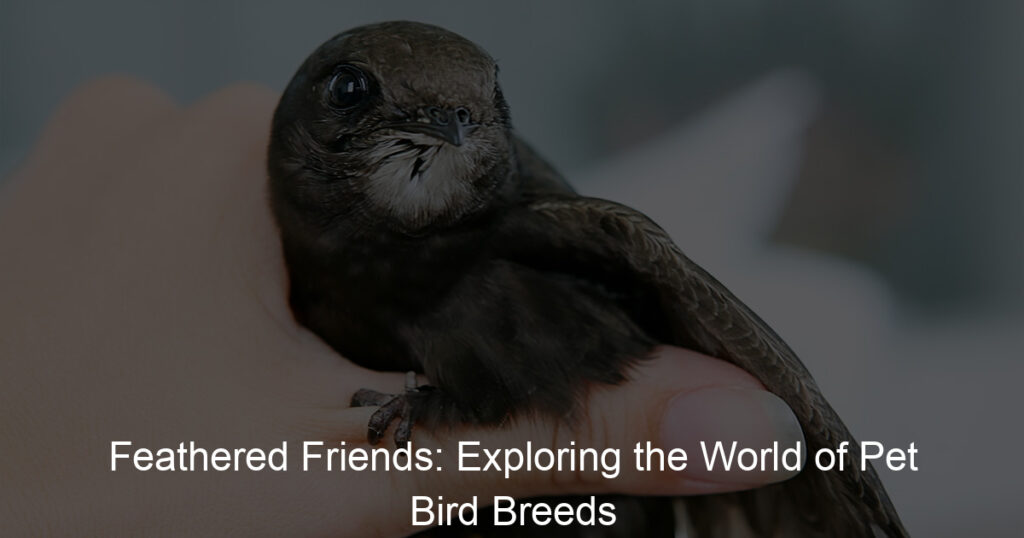
Introduction to Bird Behavior Interpretation
Have you ever wondered what your pet bird is trying to tell you? Just like humans, birds have their own unique way of communicating. Understanding bird behavior interpretation is not only fascinating, but it’s also crucial for the well-being of your feathered friend. In this section, we will delve into the importance of bird behavior interpretation and how it can improve pet bird care.
- Understanding the Importance of Bird Behavior Interpretation
- How Bird Behavior Interpretation Can Improve Pet Bird Care
Bird behavior interpretation is a fascinating field that involves understanding the various signals and actions of birds. Birds communicate through their behaviors, and these behaviors can tell us a lot about their health, happiness, and overall well-being.
For example, a bird that is constantly preening or picking at its feathers may be stressed or anxious. On the other hand, a bird that is singing or chirping happily is likely content and comfortable in its environment. By learning to interpret these behaviors, we can better understand our pet birds and provide them with the care they need.
Understanding bird behavior is essential for providing the best care for your pet bird. By interpreting their behaviors, you can identify any potential health issues early on and take the necessary steps to address them.
For instance, if your bird is showing signs of stress, such as feather plucking or a change in eating habits, it may be time to consult with a vet or make changes to their environment. On the other hand, understanding positive behaviors, like singing or playing, can help you create a more enriching environment for your bird.
In conclusion, bird behavior interpretation is an essential aspect of pet bird care. It allows us to understand our feathered friends better and provide them with the best possible care. So, the next time your bird chirps, sings, or fluffs its feathers, you’ll have a better idea of what they’re trying to tell you.
Understanding Pet Birds: A Comprehensive Guide
When it comes to understanding our feathered friends, it’s important to know that birds, like humans, have their own unique ways of communicating. This guide will help you understand your pet bird’s body language and behavior, making your relationship with them even more rewarding.
Understanding Bird Body Language
Bird body language is a complex system of signals and actions that can tell us a lot about what a bird is thinking or feeling. Let’s break it down into two main parts:
- Interpreting bird actions: The basics
- Understanding bird behavior signals: A deeper look
Just like humans, birds use their bodies to express emotions. For example, a relaxed bird may sit with its feathers slightly fluffed up and its wings slightly open. On the other hand, a bird that is scared or stressed might hold its feathers tight against its body and its eyes might look larger than usual. These are just a few basic examples, but remember, each bird is unique and may display different behaviors.
As you spend more time with your bird, you’ll start to notice more subtle signals. For instance, if a bird is bobbing its head, it could be a sign of excitement or curiosity. If a bird is grinding its beak, it’s usually a sign that the bird is content and comfortable. It’s important to pay attention to these signals, as they can help you understand your bird’s needs and emotions better.
Understanding your pet bird’s body language is a journey, not a destination. The more time you spend with your bird, the more you’ll understand them. Remember, patience and observation are key. Happy bird watching!
Decoding Bird Communication
When it comes to understanding our feathered friends, communication is key. Birds use a variety of methods to express their feelings, intentions, and needs. Let’s delve into two primary forms of bird communication: vocalizations and physical gestures.
- Understanding bird communication: Vocalizations
- Understanding bird communication: Physical gestures
Birds use vocalizations as a primary means of communication. These sounds can range from simple chirps to complex songs. Each sound has a specific meaning, and birds use them to convey different messages.
For instance, a bird’s song can be a way of claiming territory, attracting a mate, or warning other birds of danger. The pitch, volume, and rhythm of these sounds can all change the message. Understanding these vocalizations can provide valuable insights into a bird’s behavior and mood.
Physical gestures are another crucial aspect of bird communication. These can include flapping wings, puffing feathers, or changing body positions. Like vocalizations, each gesture has a specific meaning.
For example, a bird that puffs up its feathers might be trying to appear larger to intimidate a potential threat. On the other hand, a bird that bows its head could be showing submission or preparing to preen its feathers. Observing and understanding these physical gestures can help us better interpret bird behavior.
Decoding bird communication can be a fascinating journey. By paying close attention to their vocalizations and physical gestures, we can gain a deeper understanding of our avian companions and their complex social structures.
Remember, patience is key. With time and practice, you’ll become more adept at interpreting these signals and forming stronger bonds with your feathered friends.
Pet Bird Behavior Analysis
Understanding your pet bird’s behavior can be a fascinating and rewarding experience. In this section, we will delve into a case study that will help us better understand bird actions and their meanings.
Case Study: Interpreting Bird Actions
- Case study introduction
- Analysis of bird behavior
- Key takeaways from the case study
Our case study involves a two-year-old parakeet named Sunny. Sunny’s owner noticed some changes in Sunny’s behavior and was unsure how to interpret them. This case study will analyze Sunny’s actions and provide insights into bird behavior.
Sunny’s owner observed that Sunny was often fluffing his feathers, a behavior that could indicate several things. After ruling out health issues with a vet, it was concluded that Sunny was trying to communicate comfort and contentment. Sunny was also observed bobbing his head frequently, a common bird behavior that often signifies excitement or playfulness.
From this case study, we learn that bird actions can have multiple meanings and understanding them requires careful observation and sometimes professional consultation. It also emphasizes the importance of knowing your bird’s normal behavior to quickly identify any changes.
In conclusion, interpreting bird behavior can be complex, but with patience and observation, it can lead to a deeper understanding and stronger bond with your pet bird. Remember, each bird is unique and may display behaviors differently. So, always pay attention to your bird’s actions and consult a professional if you notice anything unusual.
Common Bird Behavior Signals and Their Meanings
Understanding bird behavior is a fascinating aspect of pet bird care. Birds communicate in various ways, and by learning to interpret these signals, you can enhance your relationship with your feathered friend. Let’s explore some common bird behaviors and their meanings.
- Understanding common bird behavior signals
- Preening: This is when a bird uses its beak to clean and arrange its feathers. It’s a sign of contentment and relaxation.
- Fluffing feathers: Birds fluff their feathers to adjust their body temperature or to clean themselves. However, if your bird is fluffing its feathers more than usual, it could be a sign of illness.
- Singing and chirping: Birds use songs and chirps to communicate. A happy bird will often sing or chirp, while a stressed or scared bird might make loud, repetitive noises.
- Beak grinding: This is a sign of contentment and relaxation. It’s often done just before the bird goes to sleep.
- Interpreting these signals for better pet bird care
- If your bird is preening or grinding its beak, it’s likely feeling relaxed and content. This is a good sign that your bird is comfortable in its environment.
- If your bird is fluffing its feathers more than usual, it might be feeling unwell. In this case, you should consult with a vet.
- If your bird is making loud, repetitive noises, it might be feeling stressed or scared. Try to identify any potential stressors in its environment and eliminate them if possible.
Here are some common bird behaviors that you might observe:
Understanding these signals can help you provide better care for your pet bird. For example:
By learning to interpret these signals, you can better understand your bird’s needs and emotions. This will allow you to provide the best possible care for your feathered friend.
Bird Behavior and Pet Care
Understanding bird behavior is crucial to providing optimum care for your pet bird. This knowledge allows you to interpret their needs and respond appropriately, ensuring their health and happiness.
Practical Tips for Pet Bird Care
Here are some practical tips to help you take care of your pet bird effectively:
- How understanding bird behavior can help in pet care
- Practical tips for pet bird care based on bird behavior
- Provide plenty of exercise: Birds need to move around to stay healthy. Make sure your bird has enough space to fly and play. You can also provide toys to encourage activity.
- Offer a balanced diet: Birds have specific dietary needs based on their species. Research what your bird needs and provide a balanced diet accordingly.
- Regular health checks: Regular vet visits are important to catch any potential health issues early. Also, keep an eye on your bird’s behavior for any signs of illness.
- Provide social interaction: Birds are social creatures and need interaction to stay happy. Spend time with your bird daily and consider getting a companion bird if possible.
Understanding bird behavior is not just about knowing when your bird is happy or upset. It’s about understanding their natural instincts and behaviors, and how these can impact their health and wellbeing. For example, birds are naturally active and need plenty of exercise to stay healthy. If a bird is not given enough opportunity to fly or move around, it can lead to health problems like obesity or heart disease.
Here are some practical tips based on bird behavior:
Understanding your bird’s behavior and needs can greatly enhance the quality of care you provide. Remember, a happy bird is a healthy bird!
Conclusion: The Importance of Understanding Your Feathered Friend
In this article, we have delved into the fascinating world of bird behavior interpretation and pet bird care. As we conclude, let’s take a moment to recap and reflect on the key insights we’ve gathered.
- Recap of bird behavior interpretation:
- Final thoughts on pet bird care and understanding bird behavior:
Understanding bird behavior is not just about knowing when your pet bird is happy or upset. It’s about understanding their unique language and responding to their needs effectively. We’ve learned that birds communicate through a variety of ways, including vocalizations, body language, and even their feather patterns. By paying close attention to these signs, we can better understand our feathered friends and provide them with the care they need.
When it comes to pet bird care, understanding bird behavior is crucial. It allows us to create a comfortable and stimulating environment for our pets, ensuring their health and happiness. Remember, every bird is unique and requires personalized care. By taking the time to understand your bird’s behavior, you are not only improving their quality of life but also strengthening the bond between you and your feathered friend.
In conclusion, understanding your bird’s behavior is more than just a fascinating pastime; it’s a responsibility that comes with the joy of having a pet bird. So, keep observing, keep learning, and keep providing the best care for your feathered friend.
